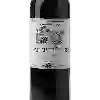
Winery L. MetairieChâteau de Thoiriat Beaujolais Blanc
In the mouth this white wine is a .
This wine generally goes well with vegetarian, poultry or lean fish.
Taste structure of the Château de Thoiriat Beaujolais Blanc from the Winery L. Metairie
Light | Bold | |
Dry | Sweet | |
Soft | Acidic |
In the mouth the Château de Thoiriat Beaujolais Blanc of Winery L. Metairie in the region of Beaujolais is a .
Food and wine pairings with Château de Thoiriat Beaujolais Blanc
Pairings that work perfectly with Château de Thoiriat Beaujolais Blanc
Original food and wine pairings with Château de Thoiriat Beaujolais Blanc
The Château de Thoiriat Beaujolais Blanc of Winery L. Metairie matches generally quite well with dishes of pasta, vegetarian or poultry such as recipes of salmon cannelloni, mushroom, bacon and gruyere quiche or pastilla with chicken (moroccan pie with brick sheets).
Details and technical informations about Winery L. Metairie's Château de Thoiriat Beaujolais Blanc.
Discover the grape variety: Chardonnay
The white Chardonnay is a grape variety that originated in France (Burgundy). It produces a variety of grape specially used for wine making. It is rare to find this grape to eat on our tables. This variety of grape is characterized by small bunches, and small grapes. White Chardonnay can be found in many vineyards: South West, Burgundy, Jura, Languedoc & Roussillon, Cognac, Bordeaux, Beaujolais, Savoie & Bugey, Loire Valley, Champagne, Rhone Valley, Armagnac, Lorraine, Alsace, Provence & Corsica.
Informations about the Winery L. Metairie
The Winery L. Metairie is one of of the world's great estates. It offers 286 wines for sale in the of Beaujolais to come and discover on site or to buy online.
The wine region of Beaujolais
Beaujolais is an important wine region in eastern France, famous for its vibrant, Fruity red wines made from Gamay. It is located immediately South of Burgundy, of which it is sometimes considered a Part, although it is in the administrative region of Rhône. The extensive plantings of Gamay in this region make Beaujolais one of the few regions in the world that is so concentrated on a single Grape variety. Pinot Noir is used in small quantities in red and rosé wines, but in the name of regional identity, it is being phased out and will only be allowed until the 2015 harvest.
News related to this wine
The Chablis vineyard and the transition to sustainable practices
On December 10, 2020, four Hong Kong personalities discussed Chablis wines on a live webinar: Yang LU, Master Sommelier and Official Bourgogne Wines Ambassador, Debra MEIBURG, Master of Wine, Ivy NG, Official Bourgogne Wines Ambassador and Rebecca LEUNG, wine expert. In this 5-minute clip, the speakers discuss organic wines and the movement towards more environmentally friendly practices. #Chablis #PureChablis ...
Food and Chablis wines pairing, by Debra MEIBURG and Ivy NG
On December 10, 2020, four Hong Kong personalities discussed Chablis wines on a live webinar: Yang LU, Master Sommelier and Official Bourgogne Wines Ambassador, Debra MEIBURG, Master of Wine, Ivy NG, Official Bourgogne Wines Ambassador and Rebecca LEUNG, wine expert. In this 4-minute clip, Debra MEIBURG and Ivy NG illustrate how easily Chablis wines complement all kinds of food, all the way from cheese to caviar! #Chablis #PureChablis ...
The Saint-Véran appellation investigated through its geology and geography
The Bourgogne Wine Board (BIVB) invites you to enjoy this video in which Jean-Pierre Renard, Expert Instructor at the Ecole des Vins de Bourgogne, explains the topographical and geological characteristics of the Saint-Véran appellation.The exercice is particularly complex as there are so many variables that make up the terroir throughout its geographical area. This video is taken from the “Rendez-vous avec les vins de Bourgogne” program broadcasted in June 2021. Retrouvez-nous sur les réseaux so ...
The word of the wine: Tanin
A natural compound contained in the skin of the grape, the seed or the woody part of the bunch, the stalk. The maceration of red wines allows the extraction of tannins, which give the texture, the solidity and also the mellowness when the tannins are "ripe". The winemaker seeks above all to extract the tannins from the skin, the ripest and most noble. The tannins of the seed or stalk, which are "greener", especially in average years, give the wine hardness and astringency. The wines of Bordeaux (based on Cabernet and Merlot) are full of tannins, those of Burgundy much less so, with Pinot Noir containing little.














